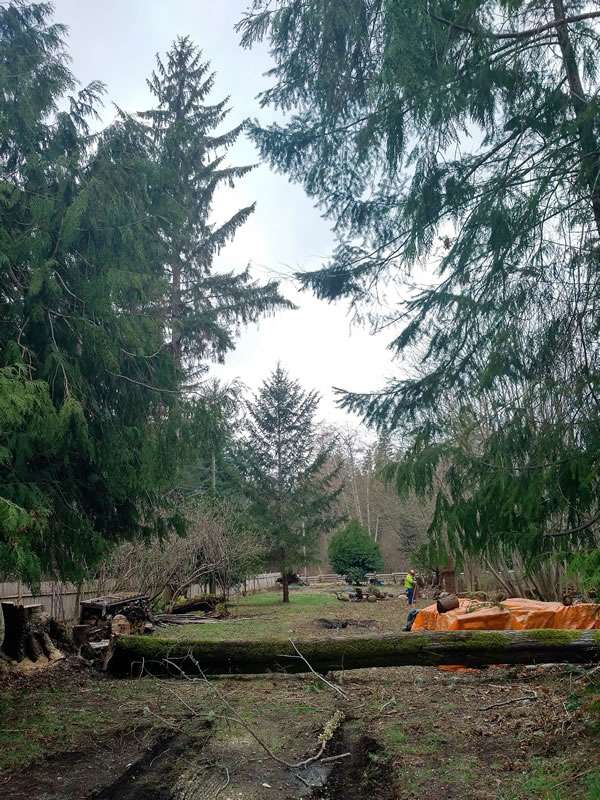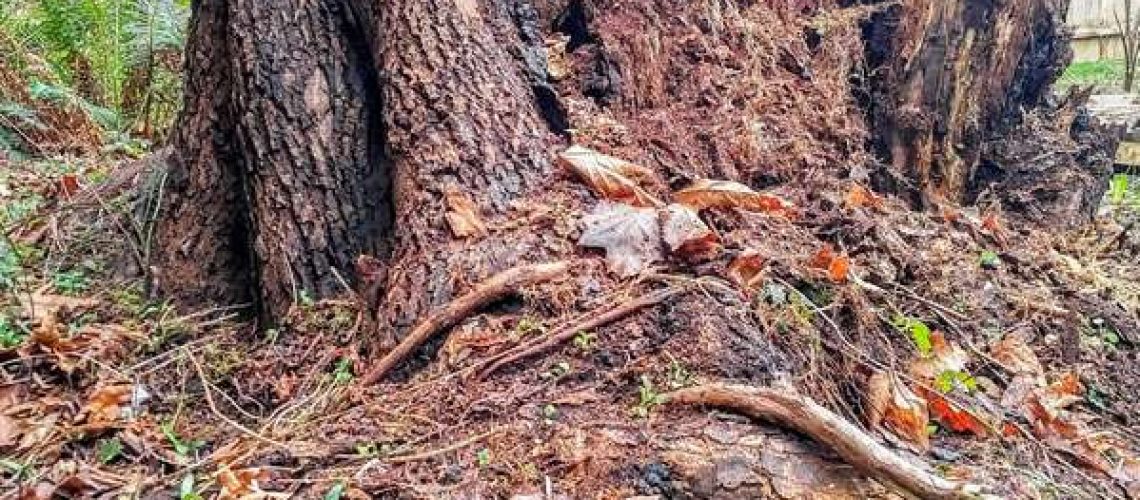A “Good Catch” is a safety near miss or a close call – any unplanned event or unseen hazard that does not result in an injury, illness or damage but, had the potential to do so. We have decided to start a series posting Good Catches to our page to help others recognize and deal with situations that may lead to injury, illness or damage BEFORE it can happen.
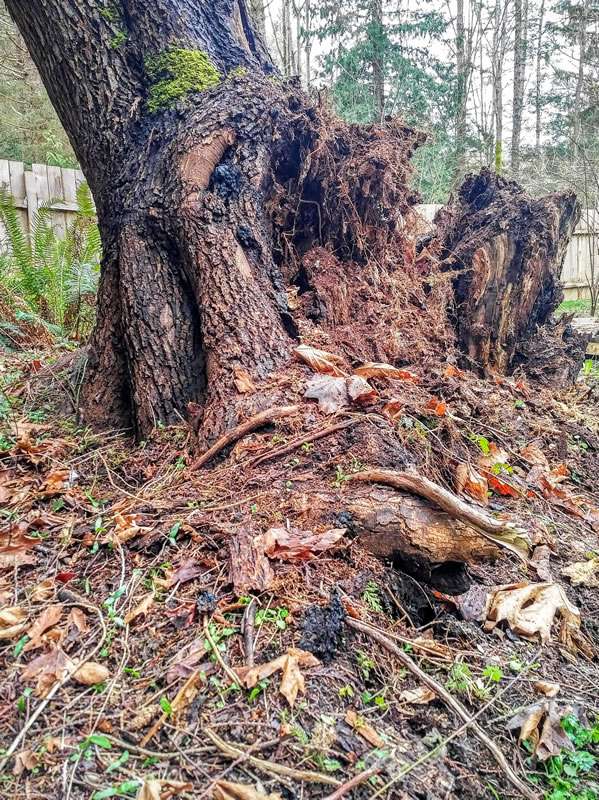
This is the stump of a severely decayed 60+cm DBH maple tree. Rot formed in the stump of the tree where one of the stems failed years ago. Eventually, the roots under the failed side of the tree decomposed and could no longer keep the tree upright. A gusty day was all that was needed to tip the tree over.
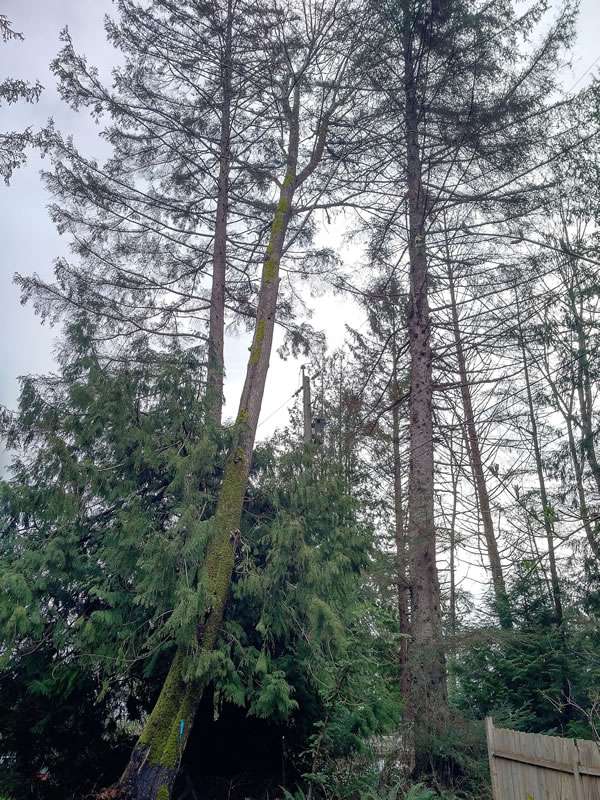
The tree is completely uprooted over the BC Hydro 25,000 volt power line. The large spruce tree on the opposite side of the power line is the only thing keeping the maple from failing onto the dangerous wires, putting the power out, smashing the pole and destroying the transformer.
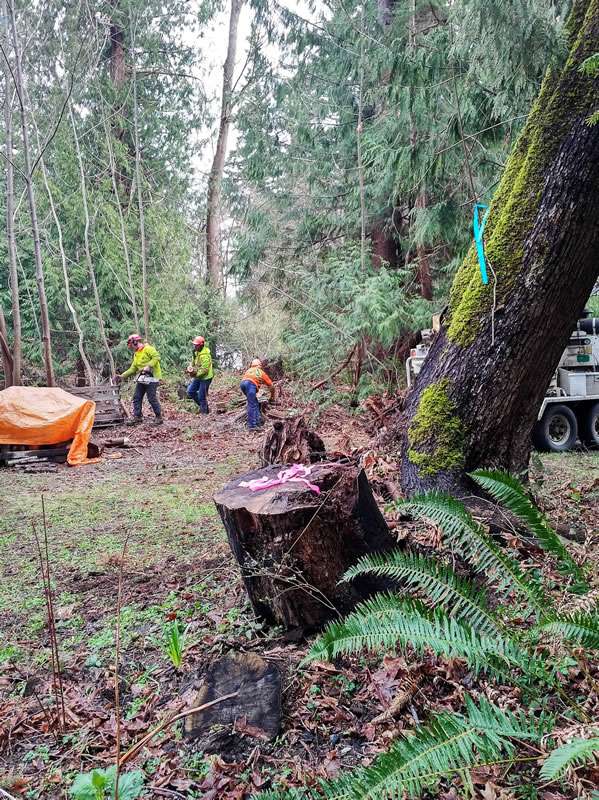
An assessment of the tree indicates total failure. The crew determines the best option for removal is pulling the uprooted maple out of the spruce with heavy bull ropes and falling it in the direction perpendicular to the power line. An outage on the BC Hydro power line is obtained as a number of the maple tree’s large limbs were tied up in the spruce over the line. There is a high probability that limb failure over the power line will occur when the maple is being pulled out of the spruce, jeopardizing the safety of the workers and the power system itself. Eliminating the power in this situation to focus on getting this extremely difficult tree down safely is a GOOD CATCH.

The crew discusses the plan for the safe removal of the hazard tree and decides to use two ropes to pull the large maple away from the power line. Pulling the tree back from two directions cradles the tree and gives more directional control in a difficult removal situation. The customer is contacted and permission to remove smaller trees in the fall zone is granted. The space is necessary to allow both ropes to pull the tree back without brushing adjacent trees, which would cause damage to ropes and gear.
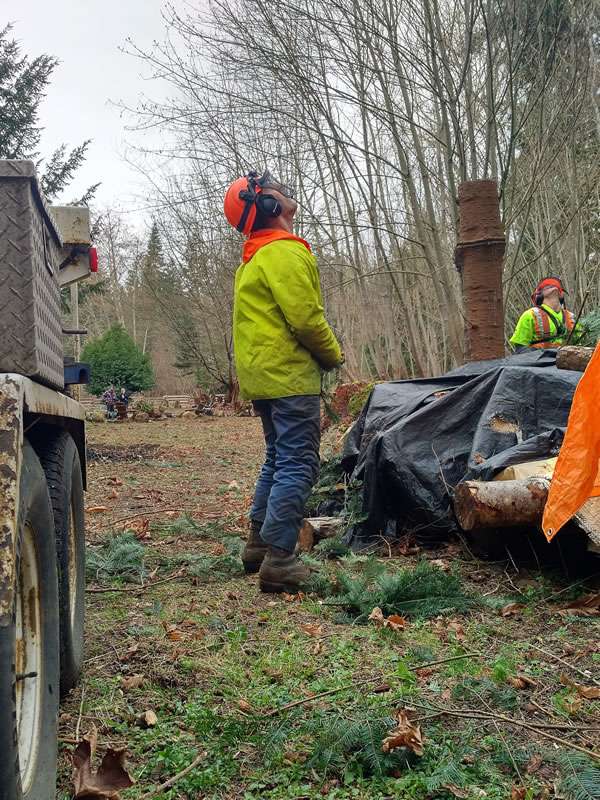
The ground crew works with an aerial worker in the bucket above to remove the trees which are in the fall zone directly behind the uprooted maple. Radio communications enable the crew to stay in constant contact with one another and make sure the job is done safely and efficiently. One of the “Golden Rules” of tree work is pictured here: LOOK UP AND LIVE.

The crew discusses the plan for the safe removal of the hazard tree and decides to use two ropes to pull the large maple away from the power line. Pulling the tree back from two directions cradles the tree and gives more directional control in a difficult removal situation. The customer is contacted and permission to remove smaller trees in the fall zone is granted. The space is necessary to allow both ropes to pull the tree back without brushing adjacent trees, which would cause damage to ropes and gear.

Two 3/4″ bull ropes, installed and ready to pull.
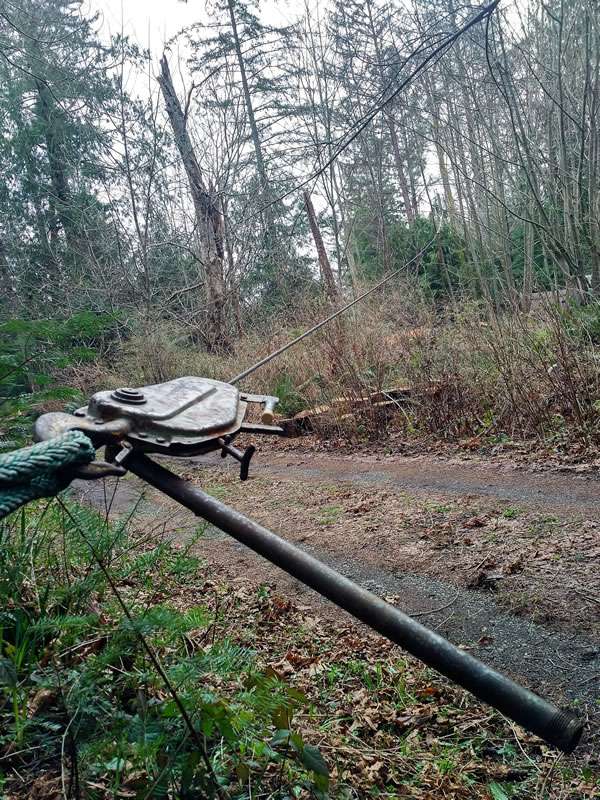
Tirfors are hooked up to the ropes and the maple tree is “straightened out”. Our crew stays clear while the maple limbs break as it is pulled out of the spruce. At this point there is no time to take pictures. The tree is unstable and requires quick and accurate falling cuts be made immediately.
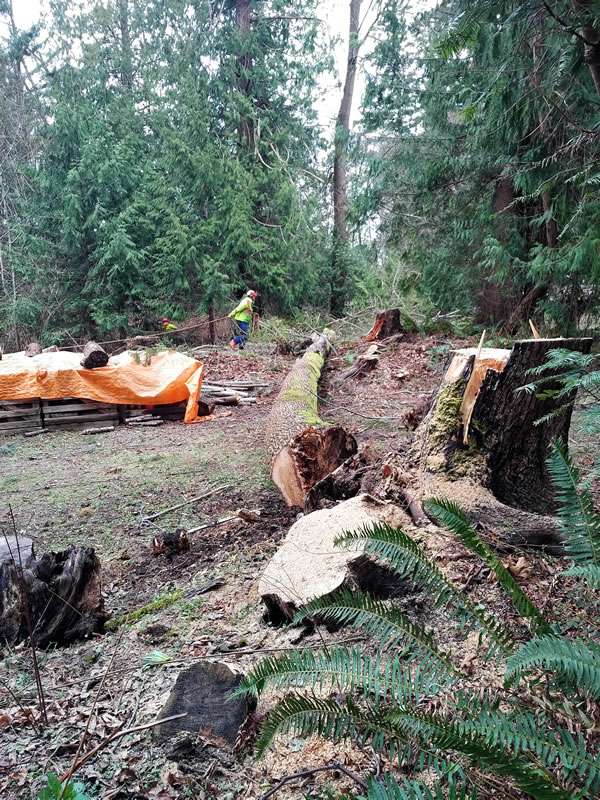
We had permission to hit the firewood pallets but as it turns out our the crew manages to avoid doing any damage.
